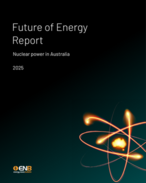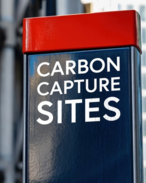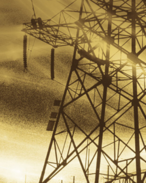This article is 19 years old. Images might not display.
The argument for nuclear energy as a means of addressing climate change is strongly supported by scientists such as Associate Professor Martin Sevior from the University of Melbourne's School of Physics, who said that nuclear energy was at least as cheap as clean coal technology and given Australia's reserves of uranium, a resource that could last centuries.
"Australia has an opportunity to influence the nuclear policies of China and India, to ensure safeguards are in place and to minimise the chance of proliferation. If we don't sell uranium, we can't do that," Sevior argued.
Sevior said Australia had a vested interest in ensuring that the rapidly expanding economies of China and India adopted low carbon energy technology, and that nuclear energy was the only currently available option given the available time and scale of their economies.
"It is in our interest that China and India adopt nuclear power at the earliest opportunity and in the safest way possible. Australia should start looking at setting up a regulatory framework now for the option of nuclear power in the future."
The head of the Royal Melbourne Institute of Technology's Physics department, Professor Peter Johnston, is a member of the Nuclear Safety Committee and the Radiation Health Safety Advisory Council, with more than 20 years experience in radiation protection.
Johnston said that one of the key obstacles to implementing nuclear energy was a persistent fear of nuclear accidents, despite significant advances in nuclear power plant technology and design.
"People assume that nuclear power generation will result in another Chernobyl disaster but in western countries, graphite moderated reactors – such as Chernobyl – have never been acceptable for nuclear power plants," he said.
"Western nuclear power technology is based on the principle of containment. The most severe nuclear accident in a western power station occurred at Three Mile Island in 1979. The containment building which housed the reactor prevented any significant release of radioactivity, despite the fact that about half of the reactor core melted. The accident was attributed to mechanical failure and operator confusion."
Johnston said nuclear technology had made many improvements in the last 25 years, both in containment, inherent safety reactor design and managing "human factors".
"On the issue of safe nuclear waste disposal, the amount of waste generated by nuclear power is tiny in comparison to that generated by fossil fuels," Johnston said.
"Nuclear energy does produce toxic waste but the small quantities mean that it can be well controlled and unlike other toxic waste, it gets less toxic with time. In comparison, waste from fossil fuel generation is also toxic and large amounts of greenhouse gases are also produced."
The head of Australian National University's Physics Department, Professor Aidan Byrne, has been studying nuclear research for more than 25 years, and also believes that nuclear power is a viable alternative to coal-based energy production.
However, Byrne said that any energy project needed to be evaluated on a case-by-case basis, although the potential impacts of climate change required decisions on nuclear policy to be made sooner rather than later.
"Australia is blessed by having a multitude of energy options including coal, wind, solar and nuclear … I believe that nuclear energy is less risky than coal. Provided that the right structures and procedures are in place, conventional nuclear reactors are relatively safe," said Byrne.
"The risks associated with climate change are now so great and the consequences so profound that we simply have to take nuclear energy seriously. The increase in energy demand from countries like China and India is likely to double world energy usage in the next 40 years. Using fossil fuels to meet this demand may be catastrophic."
Byrne advocated a policy of "parallel solutions" including energy conservation, increased efficiency and expansion of renewables.
"A modest expansion of nuclear capacity would provide a useful addition to this mix," he said.
However, UNSW Institute for Environmental Studies Adjunct Professor Frank Muller, a policy expert with specific interests in greenhouse and sustainable development policy, said that given the nuclear weapons held in countries such as India, Pakistan and Israel, nuclear proliferation and terrorism are the most serious problems facing increased uranium exports.
"We live in more dangerous times than when Australia first debated uranium exports and have clear evidence of how difficult it is to separate the peaceful and non-peaceful uses of nuclear energy," Muller said.
Muller also cast doubts over nuclear energy's potential to address climate change issues.
"To make a difference on climate change, we would need thousands of nuclear power plants in many countries around the world compared to around 400 today," he said.
According to Muller, the widespread adoption of nuclear energy would lead to increased risks of nuclear materials being diverted from peaceful purposes to weapons programs or nuclear terrorism at an order of magnitude greater than today.
Muller also said that government responses to these risks could lead to serious degradation of civil liberties in the quest for nuclear security.
Dr Mark Diesendorf, a senior lecturer at the UNSW Institute of Environmental Studies and director of the Sustainability Centre in Sydney, said that the argument for nuclear energy as a clean energy source could be disputed once the uranium lifecycle was taken into account.
"There are significant CO2 emissions from most stages of the nuclear fuel cycle," Diesendorf said.
"As high-grade uranium ore is rapidly used up and nuclear power stations have to use low-grade uranium, the CO2 emissions, especially from the mining, milling and enrichment of uranium, increase until they are equivalent to the CO2 emissions from a gas-fired power station."
Diesendorf also said that the available reserves of high-grade uranium are only sufficient to fuel one generation of nuclear power stations at the present rate of use, making it necessary to use low-grade uranium.
UNSW Associate Professor Hugh Outherd, presiding director of the Centre for Energy and Environmental Markets, has studied nuclear energy systems and their economic benefits for 30 years. Outherd said Australia can not leverage the economies of scale required to make nuclear energy a viable option domestically.
"Nuclear power is not the first option for Australia because it is more expensive than our existing coal plants," he said.
"It is important to consider our general energy consumption patterns. We could relatively easily create a lower energy lifestyle in Australia simply by becoming more frugal with our energy use … this should be our starting point," said Outherd.
EnvironmentalManagementNews.net






















